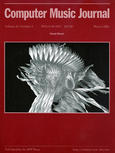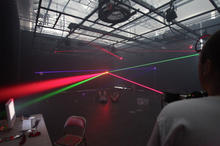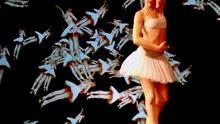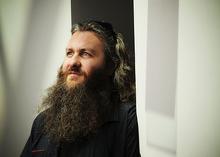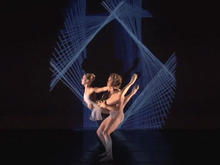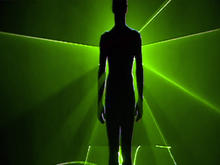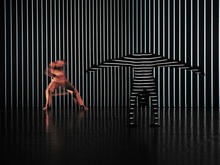Chris Salter
(*1967) is a media artist, performance director and composer/sound designer based in Montreal, Canada and Berlin, Germany.
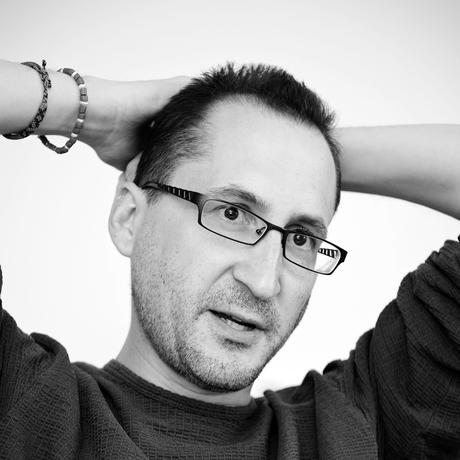
Christopher Salter is a media artist, performance director and composer/sound designer based in Montreal, Canada and Berlin, Germany.
His artistic and research interests revolve around the development and production of real time, computationally-augmented responsive performance environments fusing space, sound, image, architectural material and sensor-based technologies. Such projects range from large scale, public driven installations where the line between spectators and performers is blurred and questioned to traditional performance environments with trained performers that are augmented with computational and media systems.
His current research interests include the use of wireless sensor networks and ubiquitous computing technologies in artistic contexts, cross modal perception, enactive interactive systems, real time audio and critical studies of media, technology and performativity.
Salter studied economics and philosophy at Emory University and received his Ph.D. in the areas of theater and computer-generated sound at Stanford University where he worked with former Brecht assistant Carl Weber as well as pioneers of digital synthesis John Chowning, Max Matthews and Chris Chafe at the Center for Research in Computer Music and Acoustics (CCRMA). He was awarded the Fulbright and Alexander von Humboldt Chancellor grants for research/work in Germany from 1993-1995.
After collaborating with Peter Sellars and William Forsythe/ Ballett Frankfurt, he co-founded the art and research organization Sponge, whose works have stretched between the arenas of performance, installation, scientific research and publications and have toured internationally to festivals, exhibitions and venues. His work with Sponge as well as solo projects has been seen in such venues as the Venice Architecture Biennale (Venice), Ars Electronica (Linz), Villette Numerique (Paris), Transmediale (Berlin), EXIT Festival (Maison des Arts, Creteil-Paris), Place des Arts (Montreal), Elektra (Montreal), Shanghai Dance Festival (Shanghai), Yerba Buena Center for the Arts (San Francisco), the Banff Center (Banff), Dance Theater Workshop (New York), V2 (Rotterdam), SIGGRAPH 2001 (New Orleans), Mediaterra (Athens) and the Exploratorium (San Francisco), among others.
Salter’s projects have been written about most recently in the New York Times, ID Magazine and Leonardo magazine and received grants from the Rockefeller Foundation, the Daniel Langlois Foundation, the Creative Work Fund/San Francisco, the Social Sciences and Humanities Research Council of Canada, FQRSC and the LEF Foundation, among others. He has given invited talks at such venues as the Banff Center for the Arts, Ars Electronica, Deutsches Architektur Museum, Zurich University of the Arts, HKW Berlin, ZKM, Interactive Telecommunications Program (ITP) at NYU, HfK Zurich, Queens College/CUNY, Deutsches Architektur Museum, Brown University, Stanford University, Goldsmiths College, Elektra festival, Amherst College, the Rhode Island School of Design, Transmediale, HfG Karlsruhe, Concordia University, Subtle Technologies-Toronto, SLS-Paris, NIME 03-Montreal, UdK-Berlin and e-Culture, Amsterdam, among many others. He has sat on numerous juries including NIME, ISEA and the Prix Ars Electronica.
Salter has published in the areas of technology and performance, real time responsive environments, mobile real time media and cultural politics. He is the author of the forthcoming book Entangled: Technology and the Transformation of Performance to published by MIT Press in 2010. He has been visiting professor in music, graduate studies and digital media at Brown University and the Rhode Island School of Design (RISD) and is currently Assistant Professor in the Department of Design and Computation Arts at Concordia University in Montreal, Canada where he teaches in the areas of real time digital audio, immersive environments, critical theories of media and performance and technology.
Source: Chris Salter

